So you were at the range, or in the car, or at the mall, and some how you’ve wound up with a hole in your body that you didn’t start the day with. People have negligent discharges, tons of steel moving at velocity down the highway sometimes collide, and now shopping centers are getting shot up (in New Jersey, and Kenya). Sometimes bad things happen, it’s all about being prepared and having the right tools to react. Today we’ll dive into Improved First Aid Kits, Blow Out Kits, Ventilated Operator Kits, etcetera ad nauseum. The tools I carry, and think every one else should too.
[cryout-pullquote align=”center” textalign=”left|center|right” width=”100%”]This is not medical advice, I am not a medical professional, odds are your not either. Get training, learn your gear, be prepared![/cryout-pullquote]
What we’re talking about here is an Improved First Aid Kit for self aid or buddy aid while you wait for the professionals in the big trucks with the flashing lights to get to you. This is not Tactical Combat Causality Care, or remote wildness preparedness, and it’s certainly not for when the feces hits the oscillating device. The goal is to take care of the ABCs; air way, breathing, and circulation, long enough for you to get your self, your buddy, or your family, care from qualified professionals. This will not build you a fully stocked ER (are you even qualified to do surgery any way?), nor will it apply to every person and situation. You will need to mix, match, and modify to suit you needs, and not exceed your level of training. While where on the topic, get training. Seriously get training. At least get a basic first aid course from a group like St. John’s Ambulance, or Red Cross.
IFAK Contents
This is what I keep in my IFAK. Yours, and everyone else’s will likely very. I built my IFAK specifically to deal with a gun shot wound or similar major trauma.
Pouch
I have an Original S.O.E Gear Compact Tear-Off Med Pouch, in black, in the vertical configuration. The tear off pouch attaches to a back panel with hook and loop fasteners. There is also adjustable webbing that buckles together over the pouch to hold it securely. Deployment of the Original S.O.E Gear Compact Tear-Off Med Pouch is really easy; unlock the buckle, and pull. I keep the back panel on my battle belt in my 5 o’clock position, so its accessible and out of the way. The back panel is held on my battle belt with two large MAICE clips. Being mostly concerned with dealing with a gun shot wound at the range this is the best place for my IFAK. When I’m not at the range my IFAK travels with me in my work/range/go bag, it works as a stand alone item, but isn’t ideal. Original SOE does offer additional back panels to attach to other MOLLE compatible gear. There are two strips of webbing on each side of the pouch. I use an elastic band to attach a tourniquet to the pouch, using the webbing on one side.
- Original SOE Gear Compact Tear-Off Med Pouch back panel unclipped on HSGI Suregrip battle belt
- Original SOE Gear Compact Tear-Off Med Pouch on HSGI Suregrip battle belt
When the pouch opens there are two vertical flaps, and two horizontal flaps. The left horizontal flap has a set of elastic loops to secure small items. The right flap has a pocket, sized just right for CELOX and bandages. The center section also has a n elastic in the center to secure items. I keep an Izzy bandage and gauze in the center section.
- Original SOE Gear Compact Tear-Off Med Pouch
- Original SOE Gear Compact Tear-Off Med Pouch rear “Made in the Motherfucking USA”
- Original SOE Gear Compact Tear-Off Med Pouch top flaps open
- Original SOE Gear Compact Tear-Off Med Pouch all flaps open with contents
Gloves
Gloves keep you and the patient/victim separate. More importantly it keeps their blood off your hands, and anything on your hands out of their wounds. I prefer to have Nitrile gloves in my kit. Mostly because they do not contain Latex, which some people have an allergy to. Gloves will cost around 10 cents a piece. I keep 4 in my kit. 1 pair for me and a backup pair.
Buy it on Amazon |
 |
| Nitri-Cor Blue Powder-Free, Disposable Nitrile Gloves, 100/Box (Large) |
Shears
Tactical EMT scissors of sorts, trauma shears are for removing clothing around a wound. The design is especially good at cutting through tough materials like denim or leather. Bonus points if it can cut through a penny. I improvised attaching my shears to my battle belt by threading them through two rows of MOLLE. Some pouches can hold shears, and there are dedicated MOLLE sheaths available. Price should be in $5-$10 range.
Buy it on Amazon |
 |
| American Diagnostic Corporation Medicut Shear, Neon Orange |
Marker
I prefer Sharpie brand, but any felt tip marker should do. You can use this to make times on a tourniquet or dressing, or mark other important information on a casualty. I keep a Sharpie in my kit specifically so I’ll have one if I need to employ a tourniquet, I can mark the time. The marker in my bag/car/pocket might not be where I need it, if I need it. Cost should be under a dollar.
Buy it on Amazon |
 |
| Sharpie Fine Point Permanent Markers, 12 Black Markers(30001) |
Gauze
As I’m carrying a small kit I carry a small roll of gauze. Mine is 2 inches by 4 yards. If I had a larger kit I’d carry a larger roll. Gauze is useful as an improvised dressing, applying a purpose made dressing, or packing a wound. Cost should be less then $5.
Buy it on Amazon |
 |
| Everready 2″ X 4.1 yds Sterile Conforming Gauze Roll Bandage- Box of 12 |
Bandages
There are lots of different choices for bandages. Mostly because they can be applied to so many different size wounds, and so many different places on the body. I’m only concerned with treating relatively serious injuries, so the small bandages with Optimus Prime on them did not make the cut.
Israeli Bandage
Oh the Israeli bandage, one of the best pieces of first aid gear ever designed for hemorrhage control. Also know as an Izzy, Emergency Bandage, Battle Bandage, or Israeli Battle Dressing. The Israeli Bandage was developed by Bernard Bar-Natan, an Israeli military medic. The Izzy is manufactured in Israel, by First Care Products Ltd.
These bandages are really three products in one. First, the sterile non-adhesive dressing. Second, the elasticized bandage itself to wrap around the dressing and the casualty. Third, the pressure bar, which is placed over the dressing and uses the bandage to apply pressure. There is also a closure bar that can be used to secure the bandage and apply additional pressure.
The package is vacuum sealed to ensure the bandage stays sterile and is easy to tear open, using built in tear notches. The packaging also has pictorial and written directions for application.
I carry a 4″ Izzy bandage in my IFAK, and a 6″ in my range bag. They also make other sizes and styles. An Israeli Bandage should cost around $10.
Buy it on Amazon |
 |
| Ever Ready First Aid Israeli Bandage Battle Dressing First Aid Compression Bandage, 6 Inch, 5 Ounce |
Adhesive Bandage
I do carry a couple of 3″x4″ adhesive pad bandages. These are for the times when I need something to put over a minor wound, and a battle dressing is overkill. Think small cuts and scrapes that are too big to clot quickly on their own. For me these are more of a convenience item then strictly a first aid item. A small package should be a few dollars.
Hemostatic Agent
Much like bandages hemostatic agents are for hemorrhage control. That is, that you use it to stop bleeding. Where a dressing works by applying pressure to a wound, hemostatic agents are chemicals that promote clotting. Hemostatic agents should be used when direct pressure is either not effective, or slow to take effect.
The two popular brands are QucikClot and Celox. They come in a variety of sizes and styles. I avoid powdered agents as they had a reputation for being difficult to clean from wounds. Impregnated gauze is superior choice. Celox is derived from Chitosan and works independently of other blood clotting factors, it can also work on victims on blood thinners, or that suffer certain bleeding disorders. QuickClot also used to have a reputation for “feeling hot” when it was applied, current products have eliminated this.
I prefer to carry Celox as it will work in some situations where QucikClot may not. I have the Celox Rapid Gauze in my IFAK. The Celox Rapid is Z folded and makes it easy to pack a wound, or use as a dressing. Expect to spend $40 or more depending on the size and type of Hemostatic Agent.
Buy it on Amazon |
 |
| Celox RAPID from The Tactical Medic |
Tourniquet
Until recently civilian first aid and some medical professionals frowned on tourniquet use by mere mortals with out advanced medical training. It used to be that if a limb suffered a severe bleed that there were several steps to take to try and control the bleed. Tourniquets were a last ditch option to try and stop the bleeding. If used incorrectly they can cause permanent damage, even loss of a limb. Losing a limb beats the heck out of losing your life because you bled out.
A decade of operations in Iraq and Afghanistan have led to some changes in thinking about tourniquet use. They’re showing up as part of the standard issue to soldiers, and the civilian world is taking note. More emergency medical services are incorporating tourniquets into their repertoires. This is defiantly an item that you should have training on before deciding to carry it as you can hurt yourself, or another by using it incorrectly.
- Tourniquet unfolded and ready for use
- Tourniquet as it would be deployed
There are several manufactures and styles when it comes to tactical tourniquets. I prefer the CAT – Combat Applications Tourniquet. First it can be set up to apply with one hand, an important feature for self aid. Second it has in integrated windlass to increase the pressure. Operation is pretty simple and there are no extra parts to mess with, or small bits to loose. Gotta love that it just takes a minute, and gross motor skills to apply. I keep one CAT tourniquet attached to my SOE med pouch with an elastic band, and keep a second CAT tourniquet in my range bag. A CAT tourniquet costs around $30.
Buy it on Amazon |
 |
| C-A-T Combat Application Tourniquet All black version |
Occlusive Dressing
The occlusive dressing has a very specific purpose – to cover a sucking chest wound. Occlusive dressings are sometimes marketed as chest seals. The non-absorbent dressing is air and water tight, and for use on a penetrating chest wound. The dressing is self adhering and can be applied to patients that are wet, from perspiration, blood, or weather. The occlusive dressing can be used to treat or prevent a tension pneumothorax.
The two popular brands are HALO and HyFin. HALO commonly comes with two seals in a package, and a large single seal is available. The HyFin has just has one seal per package. HALO chest seals are remarkably difficult to find in Canada. So I have the HyFin in my IFAK. Expect to spend $15 to $20.
Buy it on Amazon |
 |
| HyFin® Chest Seal |
Items to Consider for your IFAK
I have read about, and see other IFAKs that contain any number of the following items. I don’t carry them in mine, for one reason or another.
14g Chest Decompression Needle -For use when a victim has a tension pneumothorax as the result of a penetrating chest wound. I’m not comfortable with using a needle to relieve pressure. This is definitely an item to have the right training to use.
Naso Pharyngeal Airway – otherwise known as an NPA. Essentially a tube that can be inserted through the nose to ensure the victim’s airway remains open. NPAs are less invasive then oropharyngeal airways which have to be inserted through the mouth and can induce the gag reflex. NPAs are one of those items I don’t carry because I don’t feel I have adequate training. This is something I intend to fix, because I don’t have a tool in my IFAK to help maintain the airway.
Burn Dressing – Burn dressing, you apply it to burns. I don’t carry one because of space constraints. I didn’t build my IFAK to deal with burns, let the pros handle that after the victim is moved to a hospital.
Disinfectant – for disinfecting wounds. I don’t think this falls into first aid, but more emergency medicine. I have enough dressings in my IFAK to keep a wound from being more exposed. Disinfecting a wound is another task I’ll leave to the professionals at a hospital.
Medications – some IFAKs are being issued with medications, and water purification tablets. If I need an Advil I’ll go to my medicine cabinet, not my IFAK.
Surgical Tape – Surgical tape is one item I don’t carry in my IFAK that I would consider. If I need a dressing on a wound I’ll rely on the Izzy bandage, which is self adhering. If I carried stand alone non-adhesive dressings I’d certainly have tape to help hold them in place.
Cost
Pre-made IFAK very in price and components and can be had from as little as $50, to in excess of $150. I’d rather build my own so it has what I need. The components for my IFAK, listed above cost about $115. Of course some items can be bought in bulk and lower the cost if you’re building multiple kits or storing spare components. The SOE Compact Tear-Off Med Pouch is a little spendy at $65 USD for a med pouch, but its worth it in my opinion. Original SOE makes some super high quality gear from some of the best raw materials they can get.



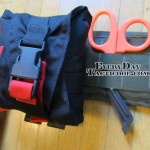
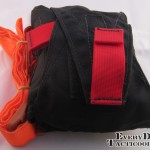

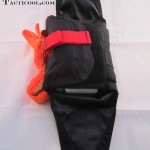
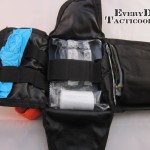
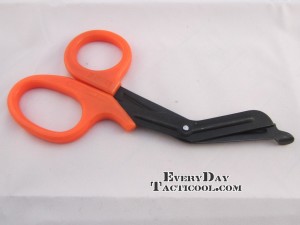


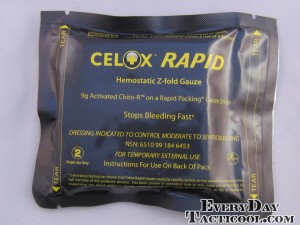
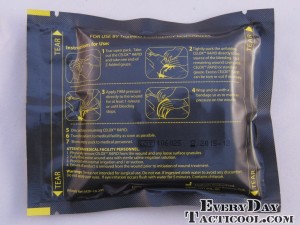
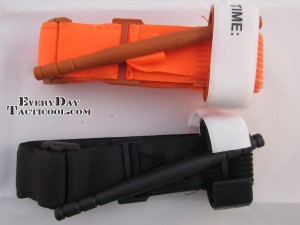
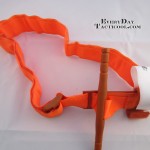
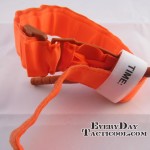
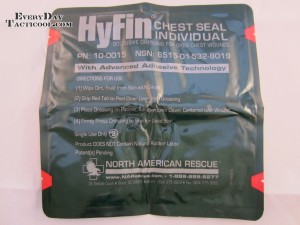
I did extensive research into each component of an IFAK and we’ve essentially reached the same conclusions with the same gear. The only difference is I carry Halo seals because I’m in America and it isn’t a problem to get them. I also have an ARS needle and an NPA with the understanding that an IFAK is for yourself, not someone else. I probably won’t be applying such things to myself unless I’m completely alone. So in the event that I actually need them, I’d hope that someone around has training to use such items. If not, I can talk them through it. And if I can’t, well then I’d just file it under “better to have it and not need it than need it and not have it – space permitting” lol. Well done on the article.